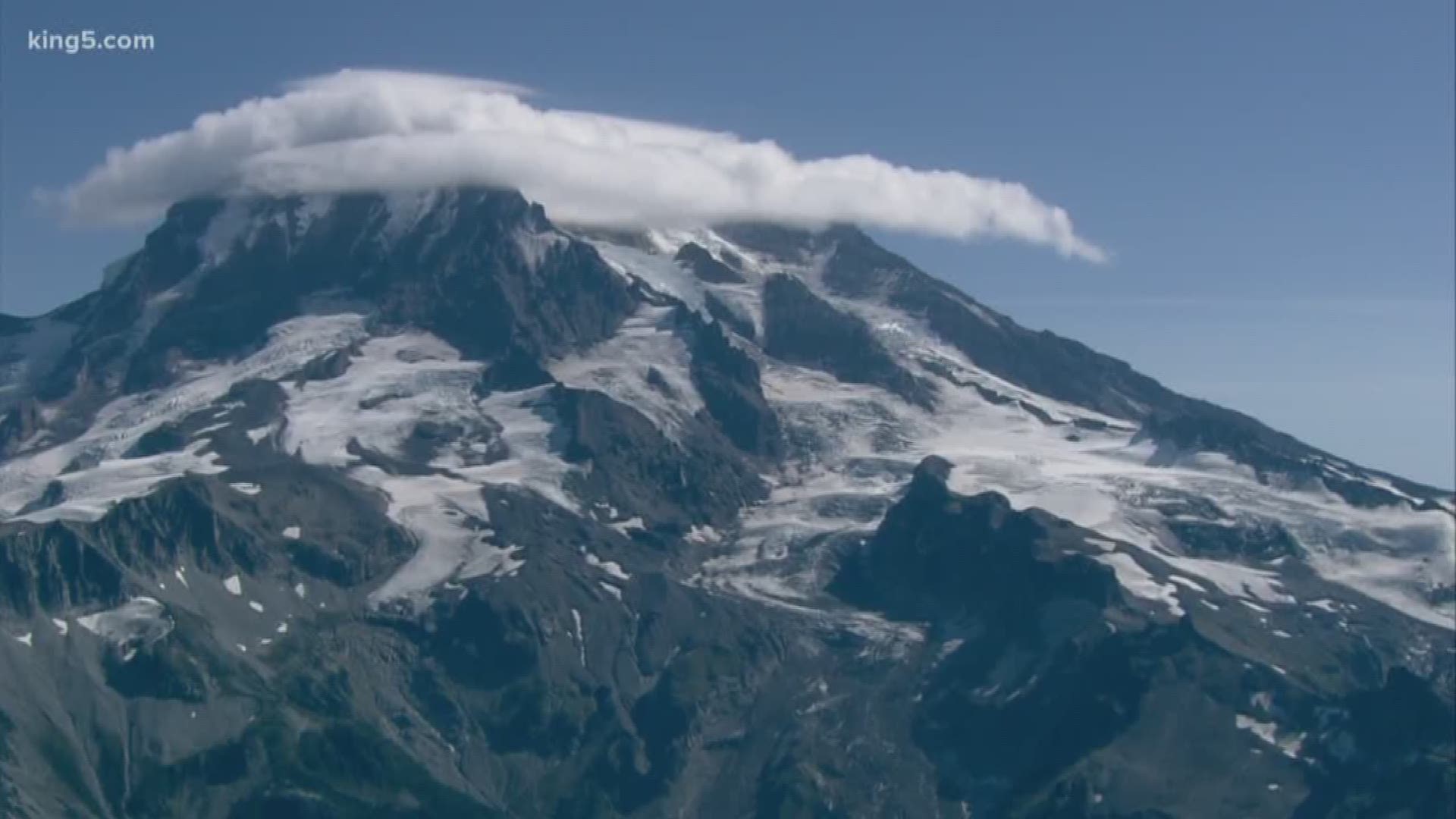CAMP MURRAY, Wash. — Part of the new bi-partisan Federal Public Lands package is a section addressing needed improvements to upgrade warnings of volcanic eruptions.
Just last October, a new National Volcanic Threat Assessment was issued by the U.S. Geological Survey. The third most dangerous volcano in the U.S. is Mount Rainier, also considered one of the world's most dangerous volcanos, not only for its size but for the fact that it is close to large population centers such as Puyallup and Tacoma and even Seattle and other communities.
Mount Rainier is wired up, meaning it has lots of instruments on its flanks that listen for earthquakes. Swarms of tiny earthquakes that can be detected and located deep, deep underground are often the first signs that magma is moving and an eruption could be possible.
A key feature of that monitoring is telling an eruptive earthquake apart from normal background earthquakes that result from the creaking and groaning from volcano's massive weight.
Washington has five volcanoes.
On May 18, 1980, Mount St. Helens erupted, killing 57 people. It erupted again in the fall of 2004, but on a smaller scale without injury. St. Helens rates second on the threat assessment list due in part to its frequency of eruption. There is Mount Adams, Mount Baker, and Glacier Peak.
Glacier Peak is set so far back in eastern Snohomish County. Yet it only has one seismometer, despite concerns that it could be the most explosive of the five.
Mount Baker also has one seismometer on its flanks says Brian Terbush, Volcano Coordinator for the Washington State Emergency Management Division, part of the military department.
Four of the state's five volcanos are in the very high risk category along with Oregon's Mount Hood just to the south of the Columbia River.
WATCH: Volcano threats in the Pacific Northwest
Terbush says three seismometers would detect small earthquakes earlier and locate where they are underground, and better tell from normal background seismicity and something signaling an eruption.
"What we can do is start detecting this unrest earlier with additional seismometers," said Terbush who as a scientist has witnessed four other eruptions around the world.
Terbush said time is critical, a longer window to gather information could help emergency responders react and plan. For example, are evacuations warranted and for how long?
"Once you're in the unrest phase, it could escalate very quickly. It could go back to sleep immediately. But you need to make a decision right then and there about what you need to do to keep people safe," said Terbush.
The Volcano Early Warning and Monitoring bill was pushed by Democratic Senators Maria Cantwell of Washington, Republican Lisa Murkowski of Alaska, and Democrat Mazie Hirono of Hawaii. All three states have seen eruptions in recent history, with big eruptions in Hawaii and Alaska just last year.
All three states have volcano observatories run by the U.S. Geological Survey. Part of the legislation now awaiting a signature from President Trump would create a National Volcano Early Warning and Monitoring System to better coordinate between them.

